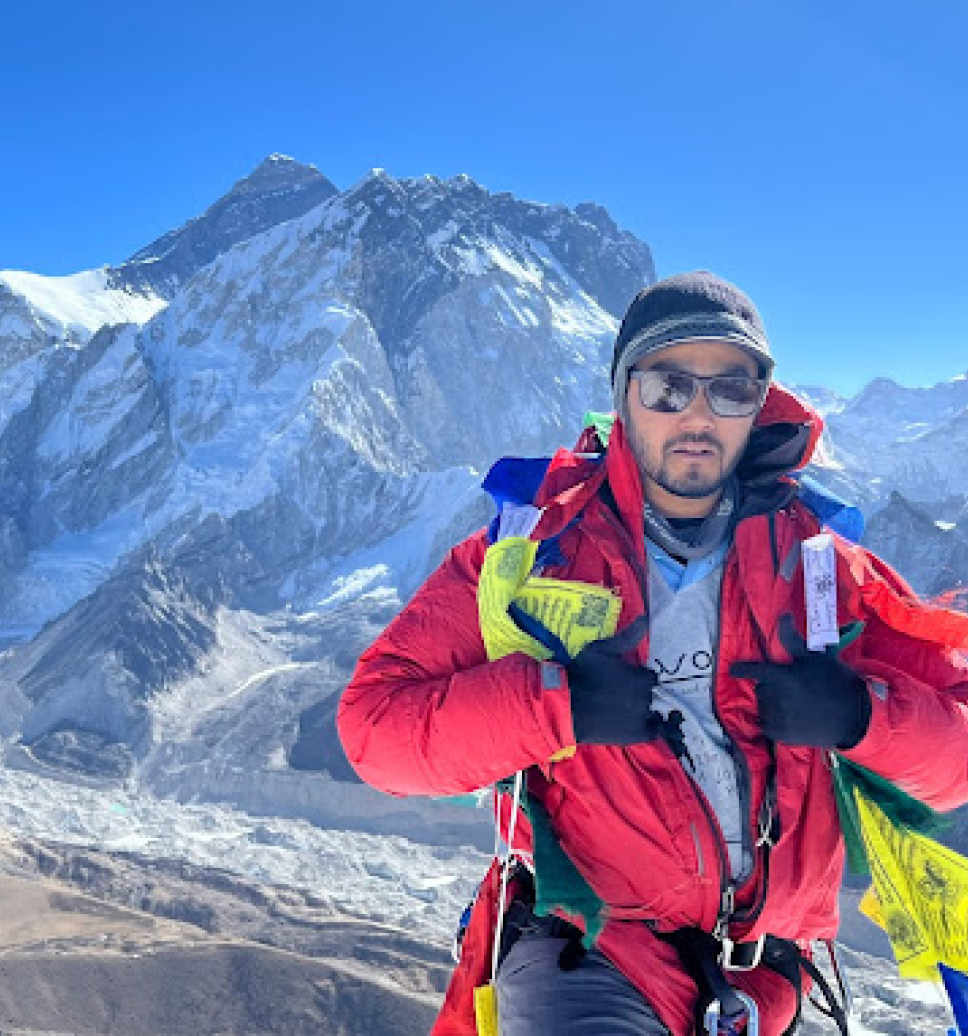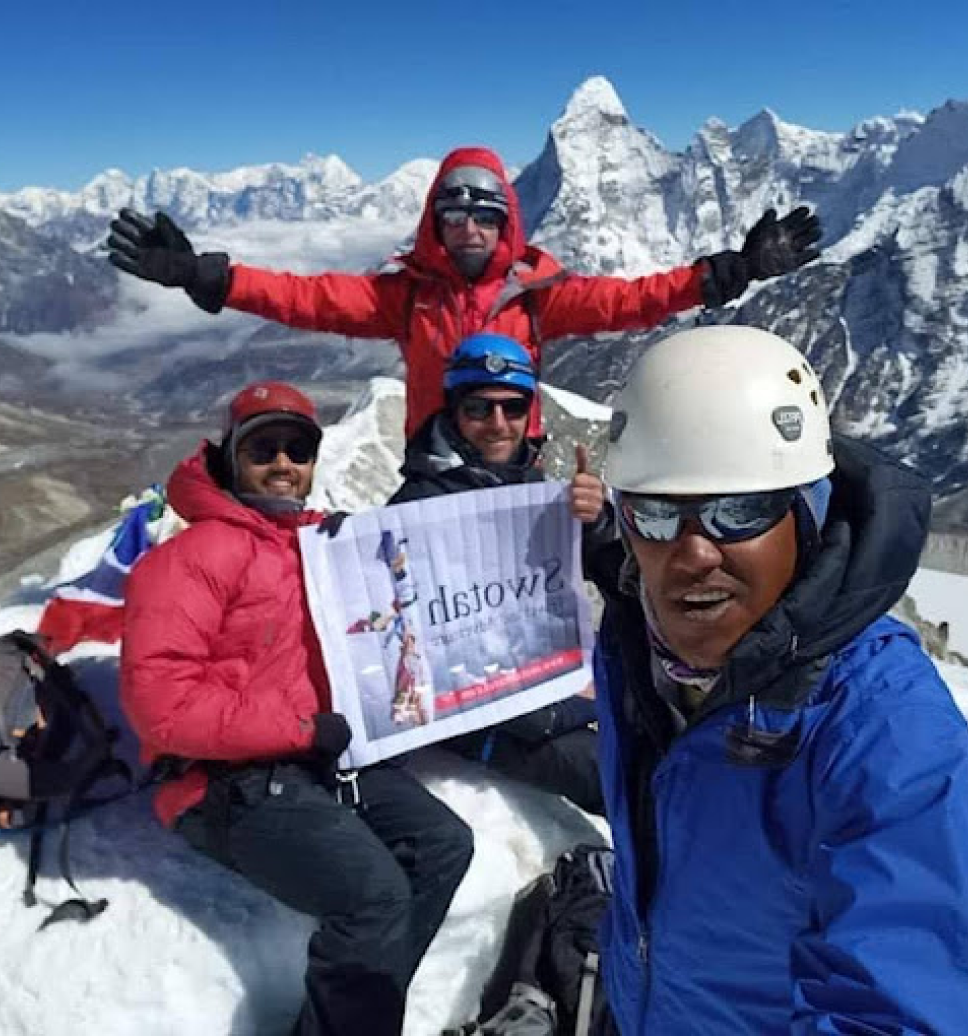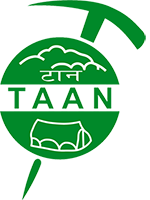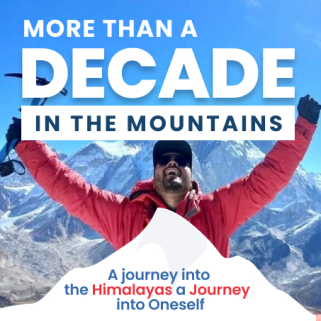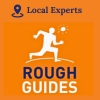GUARANTEED DEPARTURES
Check upcoming trip dates, availability & prices. If you can't see dates that suite you, contact us we will do our best to assist you.
| GUARANTEED DEPARTURES | PRICE | AVAILABILITY | |
| Mar 1, 2026 - Mar 17, 2026 | $2250 | High | |
| Mar 2, 2026 - Mar 19, 2026 | $2250 | High | |
| Mar 20, 2026 - Apr 5, 2026 | $2250 | High | |
| Mar 22, 2026 - Apr 8, 2026 | $2250 | High | |
| Apr 10, 2026 - Apr 26, 2026 | $2250 | High |
Trek Highlights
- Lobuche Peak stands at an elevation of 20,075 ft. /6119m above sea level
- It was first climbed in 1984 by Laurence Neilson and Ang Gyalzen Sherpa

Lobuche Peak climbing is the best option for most people to prepare themselves to conquer a summit. It also offers mouthwatering cuisines, beautiful Sherpa settlements, monasteries, diverse flora and fauna, and a scenic view of Mt. Everest, Mt. Lhotse, Mt. Cho Oyu, Mt. Nuptse, Mt. Ama Dablam, Mt. Pumori, Mt. Thamserku, and the other Himalayas.
Tipping Recommendation
We recommend allocating 10-15% of your total tour cost to tipping guides, drivers, and other hardworking staff who ensure your experience is unforgettable. While tipping is not mandatory, it is a meaningful way to support the seasonal workers who dedicate themselves to making your trip extraordinary.
By booking with us and participating in the tipping culture, you are directly contributing to Nepal’s local economy and helping sustain the tourism workforce. This support is crucial in retaining talent within the country and addressing challenges like brain drain.
Your generosity makes a lasting impact—thank you!
Photo Gallery
Dive into our gallery to get a glimpse of the awe-inspiring vistas waiting for you on our guided treks across stunning landscapes.
Brief Itinerary
Day
1
Arrival in Kathmandu
Day
2
Kathmandu Sight Seeing
Day
3
Kathmandu – Lukla – Phakding
Day
4
Phakding – Namche bazaar
Day
5
Namche Bazar
Day
6
Namche – Tengboche
Day
7
Tengboche – Pheriche
Day
8
Pheriche – Lobuche
Day
9
Lobuche – Kalapatthar Via Gorakshep
Day
10
Gorakshep – EBC - Gorakshep
Day
11
Gorakshep – Lobuche high camp (5180m)
Day
12
Acclimatization Day
Day
13
Summit Lobuche East – Return To High Camp (6119m)
Day
14
High Camp – Dingboche
Day
15
Dingboche – Namche
Day
16
Namche – Lukla
Day
17
Lukla To Kathmandu
Day
18
Departure from Kathmandu
Comprehensive Trek Guide
Positioning close to the Khumbu region, Lobuche peak climbing is the best way to explore the mountains through trekking as well as peak climbing. It has two main peaks, Lobuche Far East and Lobuche East; between these two peaks, there is a long, deeply notched ridge. Lobuche is one of the challenging peaks to climb, which offers the fascinating panoramic views of Mt Everest (8,848m) Mt. Lhotse (8,516 m), Mt. Cho Oyu (8,201 m), Mt. Nuptse (7,855 m), Mt. Ama Dablam (6,856 m), Mt. Pumori (7,161 m), Mt. Thamserku (7,723 m), and other Himalayas.
Following the path through the most popular places in the Everest region, like Namche Bazaar, Tengboche, Pheriche, Kala Pattar, and Gorak Shep, we will head towards the summit of Lobuche East, which lies at an altitude of 6,119m. The region reflects the culture, tradition, and rituals of the Sherpas with different myths related to various places. The Lobuche Peak Climbing route crosses many Tibetan Buddhist Monasteries, and diverse flora and fauna can be seen on the way, which makes the trip worth cherishing.
Lobuche Peak is one of the stunning mountains in the Khumbu region. It offers visitors various existing routes and shows the potential for new ones. Lobuche Peak is a strenuous climb above 20,000 feet. One must be trained in climbing and mountaineering to climb this peak. It is an excellent peak for High-altitude mountaineering.
You should be agreeable in crampons, utilizing ropes and abseiling utilizing a figure of 8 and moving between fixed lines for Lobuche Peak Climbing. It is the highest challenge that will help you feel like you are ready to climb the world's highest mountain. The Lobuche Peak trek trail starts from the traditional Everest trail. Throughout the trek, you will be enjoying the gorgeous views of mountains, the monasteries, the Sherpa people, mountains and glaciers.
Detailed Itinerary
Meals: Dinner
Accommodation: Hotel
Meals: Breakfast
Accommodation: Hotel
Meals: Breakfast,Lunch,Dinner
Accommodation: Guest house
Meals: Breakfast,Lunch,Dinner
Accommodation: Hotel
Meals: Breakfast,Lunch,Dinner
Accommodation: Hotel
Meals: Breakfast,Lunch,Dinner
Accommodation: Guesthouse
Meals: Breakfast,Lunch,Dinner
Accommodation: Guesthouse
Meals: Breakfast,Lunch,Dinner
Accommodation: Guesthouse
Meals: Breakfast,Lunch,Dinner
Accommodation: Guesthouse
Meals: Breakfast,Lunch,Dinner
Accommodation: Guesthouse
Meals: Breakfast,Lunch,DInner
Accommodation: Guesthouse
Meals: Breakfast,Lunch,Dinner
Accommodation: Guesthouse
Meals: Breakfast,Lunch,Dinner
Accommodation: Camping
Meals: Breakfast,Lunch,Dinner
Accommodation: Guesthouse
Meals: Breakfast,Lunch,Dinner
Accommodation: Hotel
Meals: Breakfast,Lunch,Dinner
Accommodation: Guesthouse
Meals: Breakfast
Accommodation: Hotel
Meals: Breakfast,Lunch
Accommodation: N/A
What's Included
- Airport transfers
- Standard/Deluxe rooms in Kathmandu on twin/double sharing with breakfast and dinner
- Guided sightseeing tour in Kathmandu along with entrance fees and a professional guide
- Accommodation during trek (or camping in case of need)
- All meals (Breakfast, lunch, dinner with soup) during the trek
- Authorized English-speaking guide along with Porters(3:1) for the trek
- Two-way Kathmandu- Lukla airfare with domestic airport departure tax
- Equipment clothing for porters, including their insurance
- Climbing permit for Lobuche East
- All applicable government tax
- All expenses for all staff –meals, accommodation, salary, equipment, insurance, transportation
- All necessary paperwork and Trekkers' Information Management System fees (TIMS)
- Medical kit (carried by your trek leader)
What's not Included
- International flights; Nepalese visa fee
- Excess baggage charge(s) for the domestic flight
- Extra night accommodation in Kathmandu and Pokhara because of early arrival, late departure or early return from the mountain due to any reason other than the scheduled itinerary
- Lunch and evening meals in Kathmandu
- Travel and rescue insurance
- Personal expenses (phone calls, laundry, bar bills, battery recharge, extra porters, bottle or boiled water, shower, etc.)
- Tips for guide(s), porter(s) and driver(s)
Frequently Asked Question
1.What are the physical requirements for this trip
2. Will your company representative come to receive us upon arrival at arrival
3. What type of accommodation will you use at the Kathmandu and during the trek
4. What is the skill level of this climb
5. How will my booking be processed
6. How can I pay the remaining payment after arriving at Kathmandu
7. What type of food can I get during the trek and is it healthy
8. Is safe drinking water available while climbing
9. What type of transportation do you use
10. How far do I have to trek each day
11. Do your trekking guides have license and certificates in the tourism sector and have they received first aid training for the high altitude
12. What safety measures can your guides do during the emergency like high altitude sickness, accidents and dehydration
13. Are climbing guides well trained and have they already climbed this summit before
14. Do we need to book our own international flights to and from Nepal
15. During the trek, can we charge the camera and other equipments
16. Is there any communication system during the trek
17. Can I add extra days to my trekking trip
18.What immunizations will I need
19. Do we need to carry our bags by our self or you will provide porters
Company Reviews
Similar Trips
Related Trips
Let your travels tell a story—crafted by locals, inspired by mountains, and lived by you.
